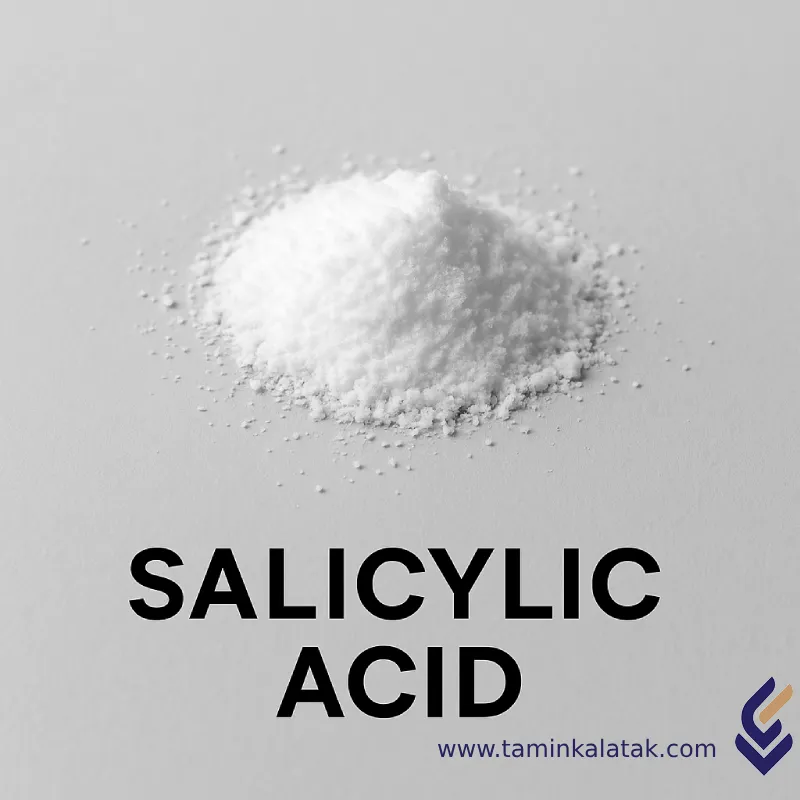salicylic acid
Salicylic Acid (C₇H₆O₃) is a well-known organic compound characterized by its phenolic structure and anti-inflammatory as well as keratolytic (exfoliating) properties. It belongs to the beta hydroxy acid (BHA) family and occurs naturally in the bark of willow trees (Salix). Salicylic acid plays a crucial role in the treatment of numerous skin disorders and is one of the most effective ingredients used in anti-acne and exfoliating skincare products.
Chemical Structure
-
Molecular Formula: C₇H₆O₃
-
Chemical Name: 2-Hydroxybenzoic Acid
-
Structure: A benzene ring with two functional groups — a hydroxyl group (OH) at position 2 and a carboxylic acid group (COOH) at position 1.
This dual functionality gives salicylic acid both phenolic and carboxylic acid characteristics, contributing to its antibacterial activity and ability to penetrate skin pores effectively.
Physical and Chemical Properties
| Property | Value / Description |
|---|---|
| Physical State | White crystalline powder |
| Melting Point | Approximately 158–161 °C |
| Solubility | Soluble in alcohol and ether; slightly soluble in water |
| pH (1% aqueous solution) | Acidic — around 2.4 |
| Odor | Mild, phenolic |
| Stability | Relatively stable in acidic media; unstable in alkaline conditions |
Applications of Salicylic Acid
In Skincare Products
-
Anti-acne treatment
-
Chemical exfoliant
-
Cleansing and unclogging pores
-
Sebum (oil) regulation
In Scalp and Hair Treatments
-
Dandruff control
-
Treatment of psoriasis and seborrheic dermatitis
In Pharmaceuticals
-
Mild anti-inflammatory agent
-
Active ingredient in topical ointments and creams
In Cosmetic Formulations
-
Used in toners, serums, masks, cleansers, and day/night creams
-
Often combined with niacinamide or retinol for enhanced results
Advantages of Salicylic Acid
-
Deep pore penetration: Unlike AHAs, BHAs are oil-soluble, allowing deeper absorption into the skin.
-
Exfoliating and anti-inflammatory properties: Effective against acne, blackheads, and whiteheads.
-
Sebum control: Helps regulate skin oil production.
-
Mild antibacterial and antifungal effects.
-
Enhances absorption of other active ingredients in formulations.
Disadvantages and Limitations
-
Possible irritation for sensitive skin: may cause redness, dryness, or flaking.
-
Use with caution during pregnancy and breastfeeding.
-
High concentrations may lead to burning or inflammation.
-
Incompatible with certain ingredients such as strong acids, pure Vitamin C, or retinol (when used simultaneously).
salicylic acid
| Solubility in water | Melting point | Density (at 20°C) | Physical appearance | Vapor pressure | Grade | CAS number | Chemical formula | Products |
|---|---|---|---|---|---|---|---|---|
| Slightly soluble (about 2.24 g/l at 20 °C) | 158–161 °C | 1.44 g/cm³ | White to colorless crystalline solid | 1 mmHg در 100°C | (Pharmaceutical Grade)، (ACS Grade)، | 69-72-7 | C₇H₆O₃ | (Salicylic Acid) |







